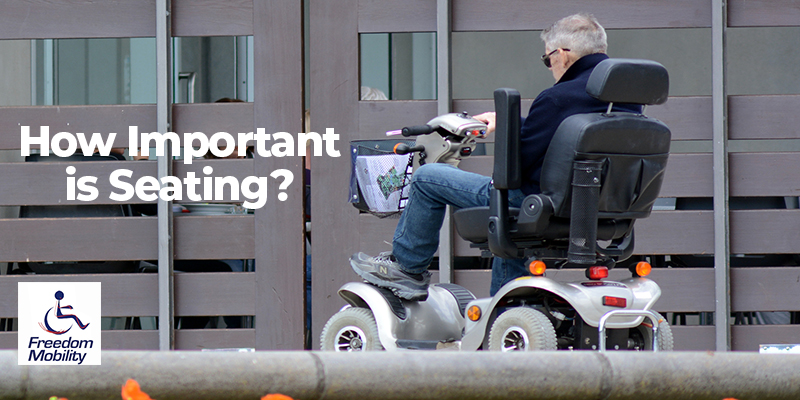In America, an estimated 1.7 million people rely on wheelchairs or power scooters as a mobility aid.
For those that spend a significant amount of time in their chairs, the position they sit in can have a huge impact on their health and well-being. A wheelchair seating system that’s a good fit can help them stay comfortable, while one that’s a poor fit can cause a host of problems.
If you want to improve your loved one’s health, learn some of the biggest reasons why wheelchair seating and positioning are vital for health and comfort.
Prevent Sores
Staying still for a long time puts a lot of stress on your skin. In areas that rub or bear weight, pressure ulcers can begin to develop. Often called “bedsores”, these ulcers don’t only occur while lying down but any position that’s maintained for a long period of time.
Pressure ulcers are especially dangerous for people with diabetes or other conditions that cause poor healing. Not only are they painful, but an untreated ulcer can get infected and lead to full-body illness. People who use wheelchairs are likely to get sores in these areas:
- Pelvic region
- The spine
- Shoulder blades
- Backs of arms and elbows
- Backs of thighs and knees
- Head and neck (if supported by the chair)
By optimizing wheelchair seating, you can take the extra pressure off these areas and reduce the chances of getting sores.
Avoid Contractures
Contractures (or contracture deformities) are a tightening or shortening of the soft tissues in or around a joint. They can lead to a permanent decrease in range of motion and limbs that are “stuck” in a bent position. People with severe arthritis or paralysis, two of the leading reasons for wheelchair use, are at the highest risk.
Like pressure ulcers, contractures occur when part of the body is kept stationary for a long time. They’re more likely to happen when part of the body is kept still in a bent position, like when someone leans on their arm for support.
Providing supportive seating can help people avoid contractures by allowing their limbs to sit and move naturally.
Allow for the Best Mobility
Like the rest of us, people who use wheelchairs to get around still want to remain as independent as possible. When their movement is restricted by bad seating and positioning, however, it can be difficult.
Adjusting their positioning to allow for good posture can extend their reach, making activities of daily living much easier. It can also give them better access to wheelchair joystick controls, improving their ability to get around without help. Growing independence levels can also raise confidence, determination, and motivation.
Ease of Breathing and Communication
For just a moment, let’s try an experiment. If you aren’t already sitting down to read this, find a chair that doesn’t have good support and have a seat.
Next, slouch down in the chair with your shoulders hunched forward and chin hanging down toward your chest. Pay close attention to how you feel. Is it harder to breathe and see what’s going on around you?
Now, imagine that this was your default position. How hard would it be to hold a conversation with someone who was standing in front of you? Would you start to feel short of breath while you were talking?
Giving someone who uses a wheelchair the support they need to sit up straight can open their lungs and make breathing much easier. Adequate breathing can increase both comfort and energy levels. Increased lung capacity and the ability to make eye contact also facilitates conversation with others.
How to Improve Wheelchair Seating and Positioning
First and foremost, make sure your loved one is using the right wheelchair. Wheelchairs aren’t a one-size-fits-all item. If your loved one is using a chair that’s too big or doesn’t provide enough support, it will be impossible for them to maintain proper wheelchair positioning.
Mobility equipment can be expensive, so if you’re in the market for a new wheelchair, check to see if it’s covered by insurance. Medicare may cover some of the costs under their durable medical equipment clause.
Next, even if their existing chair is a good fit, they may still need a bit of extra support. Gel, foam, and air-filled seat pads are a great way to fill in gaps and reduce pressure on the pelvis.
If your loved one doesn’t have the use of their core muscles, using padded straps may help them stay upright. Before adding straps, though, always make sure to consult a medical professional for advice. They should in no way restrict a person’s normal movement or reduce their independence.
Finally, the best wheelchair positioning set-up in the world does no good if a caregiver doesn’t know how to use it. Make sure that anyone who will be assisting your loved one gets instruction on how to keep them comfortable with proper posture. They should also be aware of the problems poor wheelchair seating can cause so that if any start to arise, they can take care of them right away.
Making Wheelchair Comfort and Function a Priority
If your loved one’s wheelchair seating and positioning aren’t up to par, it’s time to stop ignoring the problem. Try the suggestions listed above to help them avoid pain in favor of healthy, independent living.
Are you in the market for a better-fitting complex rehab chair or another mobility device? If you live in North or South Carolina, Freedom Mobility Center, Inc. can help. Contact us with any questions you have or to schedule your free in-home assessment today.

